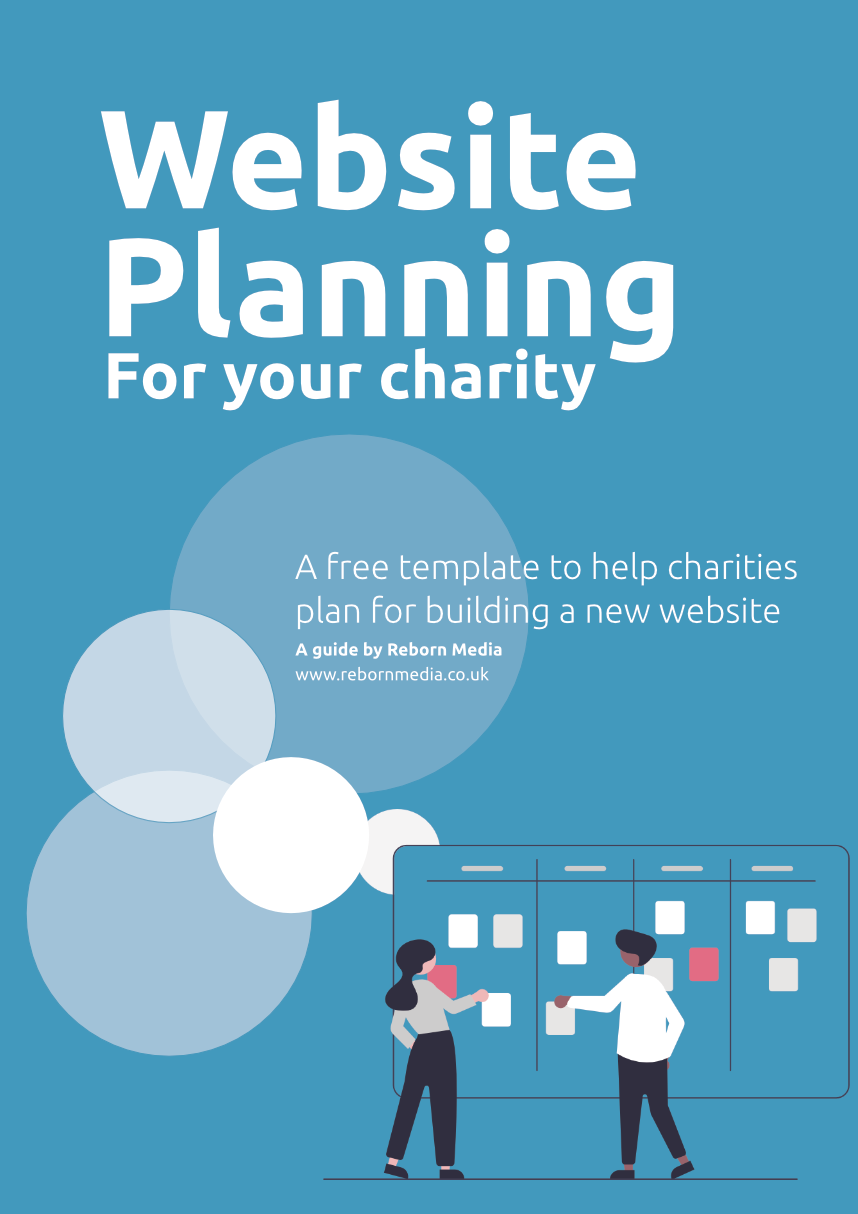I always start by asking the same basic questions. These are the who, what, why and how questions. Questions to get to the very core of why the website exists and what it should attempt to achieve.
In this post I aim to explore this process in some detail.
Download our free template
We have created a useful free template to go along with this article. It will help you plan your website and talk you through the stages.
Just fill in your email address below and we will send you the link.
Who is your ideal user/visitor?
Looking at who you want to visit your website is a great place to start.
One popular way forward is to develop avatars. Essentially a marketing avatar is a made up person with the characteristics of your ideal user/supporter.
Your avatar might be based on an existing supporter you already know or someone made up. Either way you should be able to define their characteristics, habits, demographics and aspirations.
Whilst developing your avatar it might be useful to try and answer some of the following questions.
- What keeps them awake at night?
- What makes them angry?
- What is their biggest frustration?
- What gets them excited/makes them happy?
- Do they have a built-in bias? (political, social, religious?)
- Do they have their own jargon/language?
- What websites do they spend the most time on?
- What stage of life are they in?
- What are their aspirations?
- What are their hobbies/interests?
I think it’s also helpful to give them a name and maybe even a photo. This just helps cement them in your mind. You might also find it useful to print it out and stick it up on the wall behind your desk (which is what I have done!). As you write content and start planning your website you can keep checking back. Is this going to resonate with your avatar?
One of the biggest mistakes you can make is thinking your website is for everyone. Trying to build a site that targets the ‘general public’ doesn’t work very well. The general public doesn't care enough about you or your cause.
That’s not me being mean, it is just how it is.
Before you get too disheartened, remember there will be plenty of people that care deeply about what you do. Those are the people you want to talk to. Put your energy into reaching them.
By casting your net too wide you end up diluting your efforts and not really appealing to anyone.
Once you have clearly defined your audience and who you are targeting, it is time to move onto the next stage. Working out how you are going to reach them.
How are you going to reach them?
To tackle this question I have broken it down into three sections.
What data/information can you already utilise?
Many charities (especially if they have been going a while) will have some sort of mailing list. As long as this list has been developed ethically and legitimately, it can be a really powerful and fruitful way to communicate with users that have already expressed an interest with your organisation.
Here is a word of warning though. If someone has given you permission to email them, treat that email address with love, care and respect. It should be considered a privilege.. Use it to give them your very best stuff. Your best stories, resources and information. Never abuse the privilege by spamming, or sending low quality content.
Where does your audience currently hang out?
It is human nature that like minded people group together. If you want to engage with people that are interested in your cause, it makes sense to go and join their online communities. That might be Facebook groups, niche forums and chat channels or blogs. Wherever they are, go and join the conversation.
This doesn’t of course mean turn up and talk incessantly about your charity, that is just going to annoy people. The key is to add value, build up relationships and give to the communities. Over time people will see you as an authority figure and then hopefully move towards becoming a supporter. Remember, listen first, add value and follow any forum or community rules.
What questions are they asking?
Being able to tailor your content to match your supporters' questions is a great way to engage. There are lots of useful ways to learn about what people are asking. The easiest is to think about the emails and phone calls you receive. What are the common questions that people ask? What about questions people are asking on forums and social media? Is there anything currently in the news that is provoking questions?
You can also use the related questions and ‘people also searched for’ information on Google searches. This is a great way to discover what people are searching for online.
By creating content that helps answer these questions you can start to build up authority and increase your visibility with search engine results.
The final thing to mention is frequency and consistency. Many of the ways to engage your audience mentioned above take time and patience. Building an online reputation or improving your website's reach doesn’t happen overnight. The key is to be consistent and frequent. Turn up and add value. This is a plod, not a sprint.
If you are looking at making a more instant impact then you probably need to consider PPC and paid advertising. This way you can ensure you get quick and instant reach whilst still targeting a specific audience.
What do you want them to do on your site?
This should be at the very centre of your marketing strategy. What is your website wanting to achieve?
- Are you wanting more donations?
- Are you wanting to increase awareness?
- Are you recruiting volunteers?
- Do you want to persuade people to change their behaviour or habits?
It is probably fairly likely that your website will have different goals. As difficult as it may be, try and prioritise and choose the single most important thing. I appreciate this might cause some tensions with different stakeholders in your organisation, but honestly, it is worth doing. This doesn’t mean that all the secondary goals are being discarded. Absolutely not. It just means that they need to find their place within the structure of your site. That means they get the attention they need, but also don’t detract from your main message.
Now you can start linking your goals with different avatars and ways and places you are going to reach them. (do you see how it is starting to come together now!!)
This leads nicely into the next section...
How are you going to convince them?
This is where it all comes together. How are you going to convince your users to take action. What are the key messages? How are you going to relate?
Here are some key questions you can ask yourself and your team.
- What information does a user need to be able to complete the action?
- What are there fears/concerns in taking action?
- Do they trust you?
- Do they understand the benefits/consequences of their action or inaction?
- What is the key emotion that your message needs to utilise?
- What is the best way to communicate your message? (Stories, video, case studies, statistics, infographics)
Your content needs to address these issues. It needs to persuade and convince.
Sometimes you need to break what you are asking down into smaller steps. A user might not be ready to volunteer for you just yet, but they might be interested in signing a petition or making a small donation. That is great, these small steps can all be part of the journey.
Are there any particular small step actions you can think of that would help increase the chances of completing your big money action?
How are you going to measure success?
Websites and digital marketing is a continuous working progress. Even if we would like it to be, we can never say ‘it is done’. We constantly need to change, test and improve. This is only possible if we can measure our efforts.
Using everything we have thought about above, take a moment to consider how you can measure the success of your website and marketing efforts.
The obvious thing to start with would be to look at your main goals. Has your membership increased? Has your online giving gone up? Has your newsletter mailing list grown?
These things might be fairly easy to measure but might not give the whole story. For example, your appeal page may have increased significantly in traffic but this hasn’t improved the actual giving. This would help us know that even though our efforts are producing more visits there might be a specific reason why the message on this page isn’t resonating.
It is because of this we need to understand how we are going to measure the smaller steps.
There are different tools and software we can use to help us, but we need to first of all define the parameters we are measuring by.
Some examples might be:
- Increase the number of visitors returning to our site
- Growing the mailing list
- Consistently reach X number of people with our social posts
- Increase downloads of free resources
- Increase the average time spent on the website per user
Setting systems in place to be able to measure these accurately helps us to learn, adapt and improve quickly when things aren’t working, and double down when we get it right.
Hopefully this post has been useful and has given some pointers on how to tackle the daunting task of planning a new website.
Download our free template
We have created a useful free template to go along with this article. It will help you plan your website and talk you through the stages.
Just fill in your email address below and we will send you the link.









